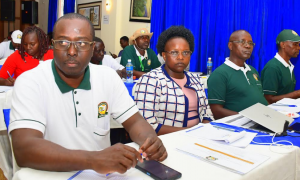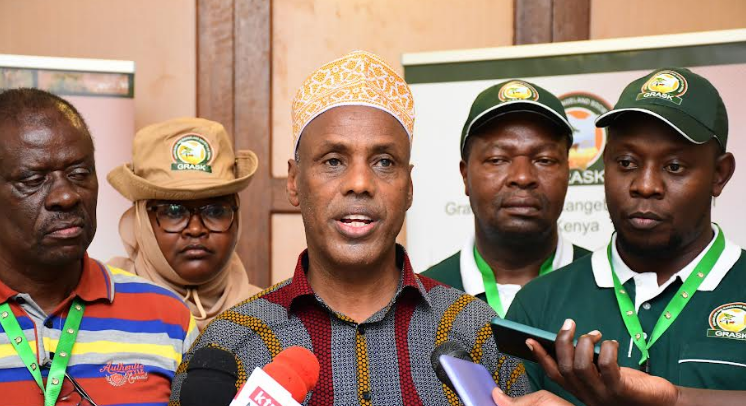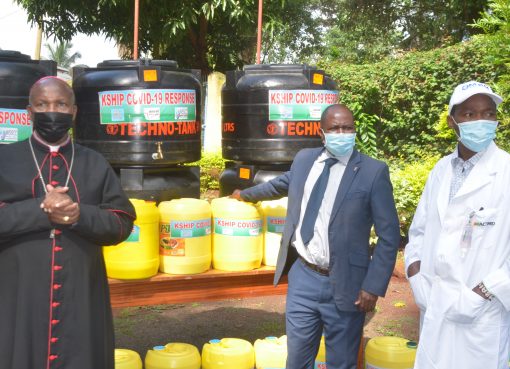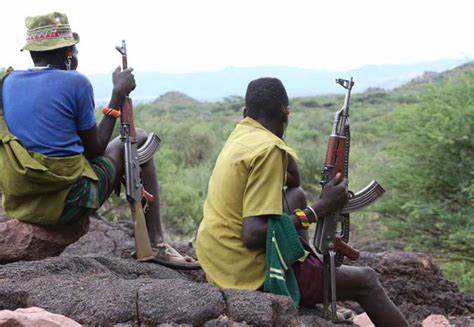To turbocharge livestock production, the State Department for Livestock is establishing 450 feedlots across 21 Arid and Semi-Arid Lands (ASALs) counties as the country grapples with a 60 per cent deficit of feeds.
Admittedly, the Director of Livestock Production in the State Department for Livestock, Mr. Bishar Elmi, said the livestock sub-sector faces challenges of feed affordability, availability, and quality.
“As a nation, we are 60 per cent feed deficit, which is the situation. Kenya, in terms of livestock herds, is number three on the continent, yet we are not exporting the much-needed red meat,” he stated.

This poses a great challenge in future nutrition needs for the country’s ever-increasing population, heading to 50 million people, which will require livestock as a source of protein, yet there is a shortage of feeds.
Other major challenges in the sector are animal genetics breeding and disease control.
The Director noted that nomadic pastoralism is only tenable if combined with modern ways of farming.
“We want to establish 450 feed lots in 21 ASAL counties. The purpose of that is to off-take livestock from the pastoralists, bring them to the feed lots, fatten and treat them for three months, and then sell,” said Mr. Elmi.
The feed lots will have pasture lands to bridge the feed deficit. Three feed lots have already been set up in Chemogoch in Baringo County, Wajir West, and Kibiru in Meru County, which is close to an abattoir in the neighbouring Isiolo County.
“In the pipeline, we have the other four in Garissa, Wajir, Marsabit, and Isiolo. We want to finish before the end of this year.”
The government also plans to roll out a commercial livestock breeding programme and a national vaccination programme to curb transboundary diseases.
The government will also sensitise farmers to commercialise and value-add livestock production to boost income.
“We can no longer keep animals for prestige. Once you commercialise, then you’re able to produce high-quality animals that meet the local and global market demand,” said the Director of Livestock.
The market he added is readily available in the country, as the annual consumption demand of red meat is 600,000 metric tonnes against a production of 400,5000 metric tonnes. The per capita income of red meat production stands at 14 kilograms.
The country, he stated, is doing well in milk production, and the dairy sector is vibrant and robust.
The Animal Production Professionals and Technicians Bill (APPT) 2023 bill, Mr. Elmi said, is undergoing thorough public participation before it is tabled in the National Assembly.
The draft bill will provide a legal framework for the training, regulation, and licensing of livestock production professionals and technicians and aims to bring sanity to the animal production sector.
The Director of Livestock opened the first Grassland and Rangeland Society of Kenya (GRASK) annual conference in Mombasa, themed “Enhancing Community Resilience and Productivity of Grassland and Rangeland Ecosystems to Achieve Food Security”
The two-day conference will highlight sustainable practices in managing grasslands and Rangeland ecosystems, improving livestock production systems, addressing climate change, and promoting food security in dryland areas.
It will also emphasise the role of technology, policy, and inclusivity in agriculture, aiming to support both ecological sustainability and economic resilience for communities who are reliant on these ecosystems.
GRASK Chairman Prof. Moses Nyangito said they will provide expertise and support to the Ministry of Agriculture and Livestock Development in their endeavour to harness resources in the country’s rangelands.
The society has been established in all 24 dryland counties. GRASK has promised to work with the ministry to champion proper management and utilisation of rangeland resources to give the country a competitive edge in producing products that would meet the standards of both local and external markets.
“Under our watch, we will ensure that good practices are implemented in harnessing the rangeland resources of this country. So that this major resource base plays its rightful role in our economic development,” assured Prof. Nyangito.
He encouraged young people to join the rangeland profession, which is largely unexploited.
GRASK Secretary General Biase Okinyi said they are a multidisciplinary society that brings together researchers from KALRO, academicians from the University of Nairobi and other universities, the State Department of Livestock Development, county governments, and community groups.
The conference, he said, will come up with concrete solutions aimed at advising the government on the measures to implement to address challenges facing rangelands.
“These are solutions that are coming from the experts. We urge our government to take them seriously so that we can help our country move forward.
The next frontier for our country is the ASALs area because the high-potential agricultural areas have already been exhausted. The only space for development that we can get is the ASALs rangelands,” said Okinyi.
By Sadik Hassan





